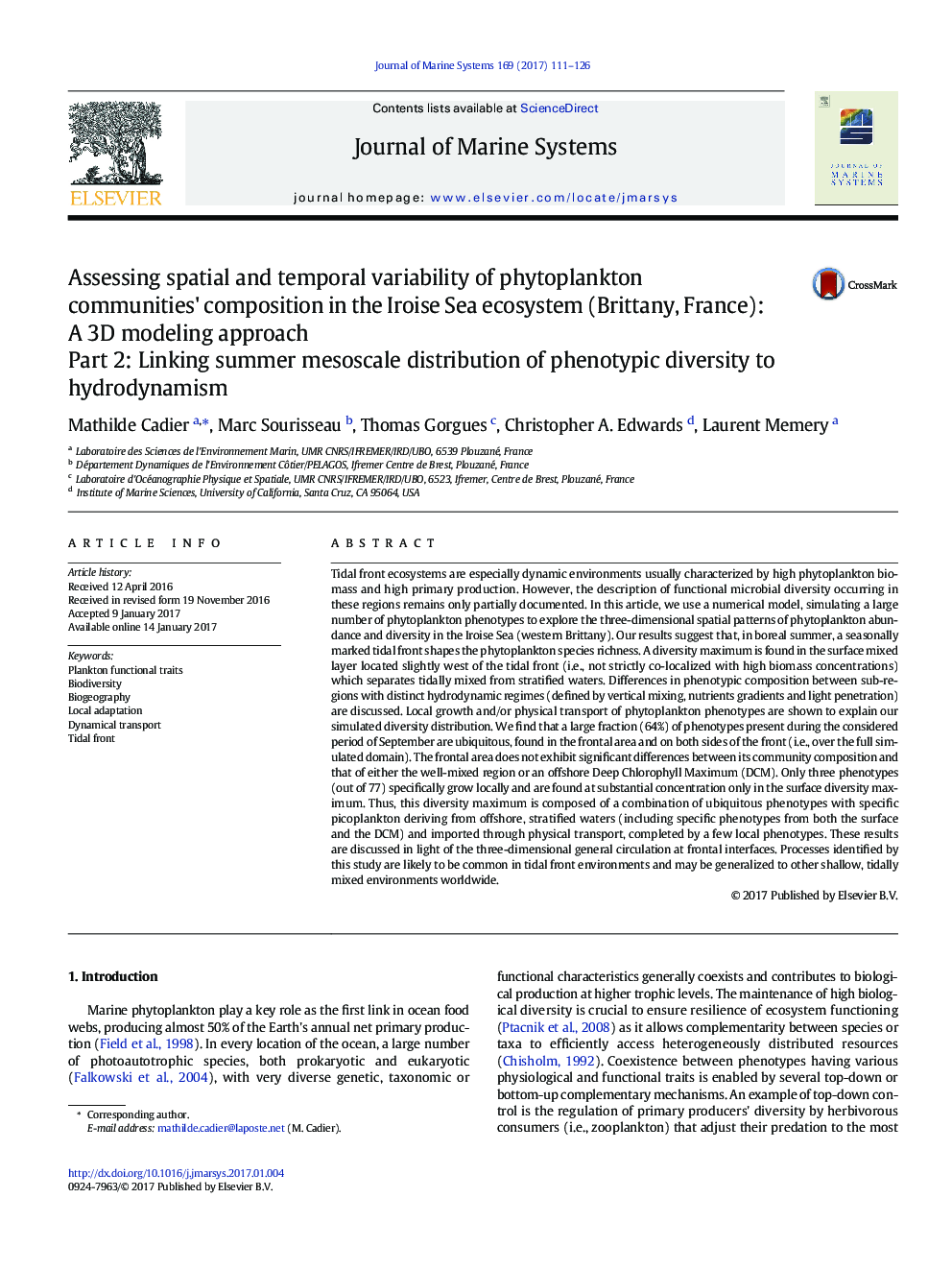| Article ID | Journal | Published Year | Pages | File Type |
|---|---|---|---|---|
| 8886047 | Journal of Marine Systems | 2017 | 16 Pages |
Abstract
Tidal front ecosystems are especially dynamic environments usually characterized by high phytoplankton biomass and high primary production. However, the description of functional microbial diversity occurring in these regions remains only partially documented. In this article, we use a numerical model, simulating a large number of phytoplankton phenotypes to explore the three-dimensional spatial patterns of phytoplankton abundance and diversity in the Iroise Sea (western Brittany). Our results suggest that, in boreal summer, a seasonally marked tidal front shapes the phytoplankton species richness. A diversity maximum is found in the surface mixed layer located slightly west of the tidal front (i.e., not strictly co-localized with high biomass concentrations) which separates tidally mixed from stratified waters. Differences in phenotypic composition between sub-regions with distinct hydrodynamic regimes (defined by vertical mixing, nutrients gradients and light penetration) are discussed. Local growth and/or physical transport of phytoplankton phenotypes are shown to explain our simulated diversity distribution. We find that a large fraction (64%) of phenotypes present during the considered period of September are ubiquitous, found in the frontal area and on both sides of the front (i.e., over the full simulated domain). The frontal area does not exhibit significant differences between its community composition and that of either the well-mixed region or an offshore Deep Chlorophyll Maximum (DCM). Only three phenotypes (out of 77) specifically grow locally and are found at substantial concentration only in the surface diversity maximum. Thus, this diversity maximum is composed of a combination of ubiquitous phenotypes with specific picoplankton deriving from offshore, stratified waters (including specific phenotypes from both the surface and the DCM) and imported through physical transport, completed by a few local phenotypes. These results are discussed in light of the three-dimensional general circulation at frontal interfaces. Processes identified by this study are likely to be common in tidal front environments and may be generalized to other shallow, tidally mixed environments worldwide.
Related Topics
Physical Sciences and Engineering
Earth and Planetary Sciences
Oceanography
Authors
Mathilde Cadier, Marc Sourisseau, Thomas Gorgues, Christopher A. Edwards, Laurent Memery,
